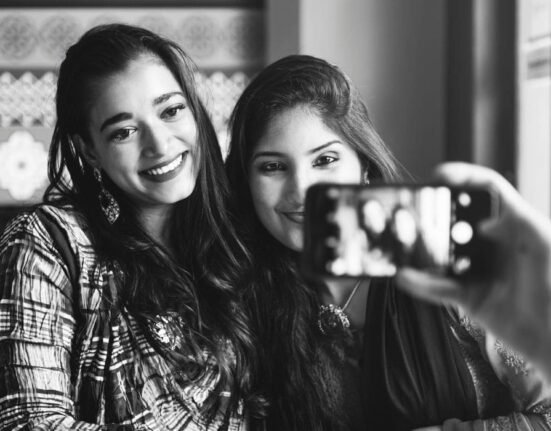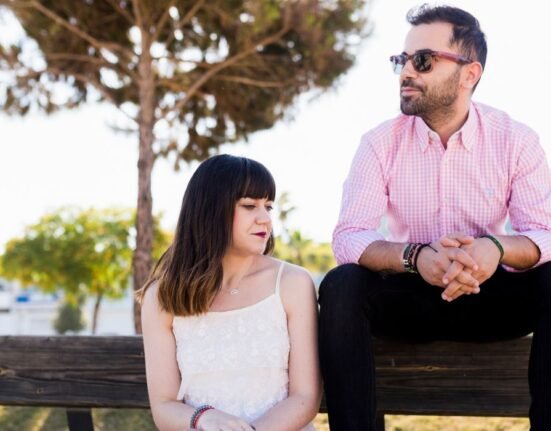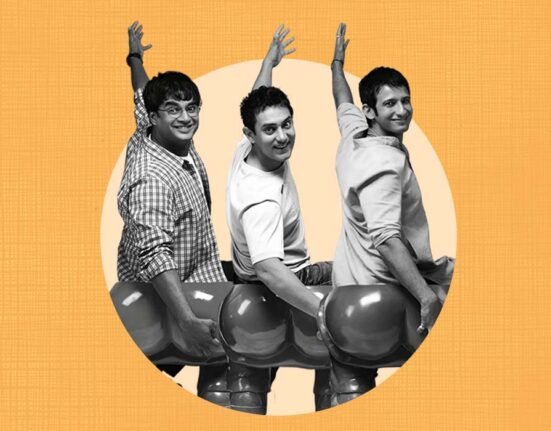Attachment is a deep emotional bond that connects two people. John Bowlby, the father of the attachment theory, said that attachment aids in survival because making strong emotional bonds is an important part of human nature. Human beings form their first attachment with their primary caregivers, and this relationship is said to be the predictor of their subsequent social, cognitive and emotional development as adults. The foundations of this relationship are usually laid within the first year of life of the infant itself. Like any structure, if the foundations of this primary relationship are weak – the child’s needs and expectations are not met, the caregiver does not spend enough time with the child, is never attentive and accessible or abusive – then these children experience fear, distress and anxiety and these patterns and unmet expectations carry on into adulthood. Adults then echo the quality of this attachment in their other close relationships and this comes to be known as their attachment style. Knowing your attachment style is useful in understanding what traits you might exhibit in relationships, realizing what you need to feel safe and communicating what you need from others and ultimately improve the quality of your relationship. Given below is a dissection of the four attachment styles that adults exhibit and how each of them may respond in romantic relationships.
Secure Attachment
When children have attentive and consistently supportive caregivers, they turn into adults who have a secure attachment style. They have their core beliefs of worthiness in place and are allowed to express their emotions which leads to high self- esteem. These adults are comfortable and secure in their romantic relationships. They feel connected to their partners while at the same time provide them with the space and freedom that they need for their personal growth. They tend to have honest relationships and are able to handle adversity and conflict with their partner in a healthy manner. However, this does not mean that adults with secure attachment function as perfect partners in their relationships, it only means that even when fights or misunderstandings arise, they handle it with a great deal of self-awareness and openness. By exhibiting such characteristics and behaviors, they are usually able to form and foster genuine bonds and are able to share their feelings with others easily. Research suggests that women with secure attachment style viewed their adult romantic relationships more positively than other women with insecure attachment styles. Another study also found that secure adults are more likely to seek support from their partners when distressed as well as provide support when their partners are distressed as compared to insecure adults.
Anxious – Preoccupied Attachment
If your primary caregiver provided comfort and support while at the same time using critical words and controlling behaviour, being inconsistent with their attention and responsiveness, you are likely to have anxious- preoccupied attachment. This manifests into clingy and overdependent behaviour in adult relationships. As these adults grow up without healthy boundaries, they struggle with self-esteem issues, are unable to nurture their individuality, and often try to make themselves an extension of their partner. They over- analyze situations and operate out of the constant fear that their partner is either going to leave them or cheat on them and fear rejection. They need constant reassurance and validation and crave emotional support and closeness to their partner which they were unable to get when they were younger. Adults with this attachment style usually function out of fantasy and view the idea of love and relationships with rose tinted glasses while overly romanticizing their bond with their partner. As they cling to the idea of security, they also become distraught when relationships end. Communication is key to improve such relationships. If you have an anxious- preoccupied attachment style, it is important to let your partner know how stability is an important factor in making you feel loved and what you would require to feel safe and reassured.
Dismissive – Avoidant Attachment
Growing up with a distant, detached and emotionally unsupportive caregiver can manifest as the tendency to remain emotionally distant in relationships in adulthood. As children, these people would have learned that they need to take care of their emotional and physical needs themselves, making it hard to nurture intimate connections. Although such adults come across as independent, they often have difficulty with intimacy and close relationships. Their emotional expression is limited and they show very little interest in forming heart to heart bonds with others. They adopt an avoidant approach to conflict and confrontation and can easily shut themselves off and pretend like they don’t care during a fight or when communication is required. These individuals also tend to experience very little distress when a relationship ends. It is very difficult for people with dismissive avoidant attachment to open up and share their fears and vulnerabilities which is why they try to focus on the shortcomings of others to justify their emotional distance from them. Getting in touch with what you want and the emotions and feelings that you usually shut off would be a good way to feel liberated and in tune with yourself if you have this attachment style.
Fearful – Avoidant Attachment
This attachment style usually develops as a response to an abusive and threatening childhood environment, making the child feel vulnerable and unsafe. Their primary caregiver would have been a source of distress which makes them adults who are fearful of intimacy and close relationships. Although they desire a close emotional bond, they are fearful of being both too close as well as too distant from others and thus try to maintain a safe distance from everyone. Individuals with this attachment style are easily overwhelmed by emotions and can therefore be very unpredictable, finding themselves in relationships that lack emotional regulation- everything alternates between being either very good or very bad. They may feel uncomfortable in close relationships and distance themselves from their partner, but also try to cling to their partner when they feel rejected because they fear being alone. This results in a lot of inner turmoil and unstable relationships. These people may also start getting anxious when they start to depend on others emotionally. If you have this attachment style, it would be healthy to acknowledge that you act out of fear and make your decisions based on momentary threats and communicate this to your partner as well. This would help you take responsibility for your actions while also reassuring your partner.
Despite all this, it is important to remember that your attachment style does not define who you are as an individual and can be worked on by coming to terms with your early childhood experiences and acknowledging that they are only a part of you. Understanding the way your past seems to be affecting your adult life will help to cultivate security and provide clarity on who you want to be and what you want to give as a partner. Digging deep into the way early childhood experiences made you feel and how they resurface in your current behaviours while simultaneously working on building healthy habits and open communication in your relationship is key to not only form happier relationships but also to get in tune with your desires and wants from life.
Secure Attachment
When children have attentive and consistently supportive caregivers, they turn into adults who have a secure attachment style. They have their core beliefs of worthiness in place and are allowed to express their emotions which leads to high self- esteem. These adults are comfortable and secure in their romantic relationships. They feel connected to their partners while at the same time provide them with the space and freedom that they need for their personal growth. They tend to have honest relationships and are able to handle adversity and conflict with their partner in a healthy manner. However, this does not mean that adults with secure attachment function as perfect partners in their relationships, it only means that even when fights or misunderstandings arise, they handle it with a great deal of self-awareness and openness. By exhibiting such characteristics and behavior, they are usually able to form and foster genuine bonds and are able to share their feelings with others easily. Research suggests that women with secure attachment style viewed their adult romantic relationships more positively than other women with insecure attachment styles. Another study also found that secure adults are more likely to seek support from their partners when distressed as well as provide support when their partners are distressed as compared to insecure adults.
Anxious – Preoccupied Attachment
If your primary caregiver provided comfort and support while at the same time using critical words and controlling behavior, being inconsistent with their attention and responsiveness, you are likely to have anxious- preoccupied attachment. This manifests into clingy and overdependent behavior in adult relationships. As these adults grow up without healthy boundaries, they struggle with self-esteem issues, are unable to nurture their individuality, and often try to make themselves an extension of their partner. They over- analyse situations and operate out of the constant fear that their partner is either going to leave them or cheat on them and fear rejection. They need constant reassurance and validation and crave emotional support and closeness to their partner which they were unable to get when they were younger. Adults with this attachment style usually function out of fantasy and view the idea of love and relationships with rose tinted glasses while overly romanticizing their bond with their partner. As they cling to the idea of security, they also become distraught when relationships end. Communication is key to improve such relationships. If you have an anxious- preoccupied attachment style, it is important to let your partner know how stability is an important factor in making you feel loved and what you would require to feel safe and reassured.
Dismissive – Avoidant Attachment
Growing up with a distant, detached and emotionally unsupportive caregiver can manifest as the tendency to remain emotionally distant in relationships in adulthood. As children, these people would have learned that they need to take care of their emotional and physical needs themselves, making it hard to nurture intimate connections. Although such adults come across as independent, they often have difficulty with intimacy and close relationships. Their emotional expression is limited and they show very little interest in forming heart to heart bonds with others. They adopt an avoidant approach to conflict and confrontation and can easily shut themselves off and pretend like they don’t care during a fight or when communication is required. These individuals also tend to experience very little distress when a relationship ends. It is very difficult for people with dismissive avoidant attachment to open up and share their fears and vulnerabilities which is why they try to focus on the shortcomings of others to justify their emotional distance from them. Getting in touch with what you want and the emotions and feelings that you usually shut off would be a good way to feel liberated and in tune with yourself if you have this attachment style.
Fearful – Avoidant Attachment
This attachment style usually develops as a response to an abusive and threatening childhood environment, making the child feel vulnerable and unsafe. Their primary caregiver would have been a source of distress which makes them adults who are fearful of intimacy and close relationships. Although they desire a close emotional bond, they are fearful of being both too close as well as too distant from others and thus try to maintain a safe distance from everyone. Individuals with this attachment style are easily overwhelmed by emotions and can therefore be very unpredictable, finding themselves in relationships that lack emotional regulation- everything alternates between being either very good or very bad. They may feel uncomfortable in close relationships and distance themselves from their partner, but also try to cling to their partner when they feel rejected because they fear being alone. This results in a lot of inner turmoil and unstable relationships. These people may also start getting anxious when they start to depend on others emotionally. If you have this attachment style, it would be healthy to acknowledge that you act out of fear and make your decisions based on momentary threats and communicate this to your partner as well. This would help you take responsibility for your actions while also reassuring your partner.
Despite all this, it is important to remember that your attachment style does not define who you are as an individual and can be worked on by coming to terms with your early childhood experiences and acknowledging that they are only a part of you. Understanding the way your past seems to be affecting your adult life will help to cultivate security and provide clarity on who you want to be and what you want to give as a partner. Digging deep into the way early childhood experiences made you feel and how they resurface in your current behaviors while simultaneously working on building healthy habits and open communication in your relationship is key to not only form happier relationships but also to get in tune with your desires and wants from life.












Leave feedback about this